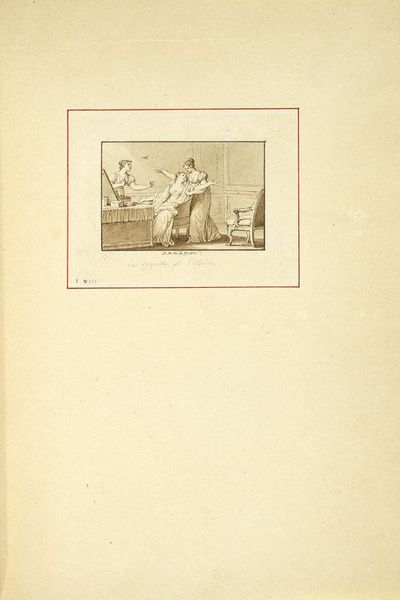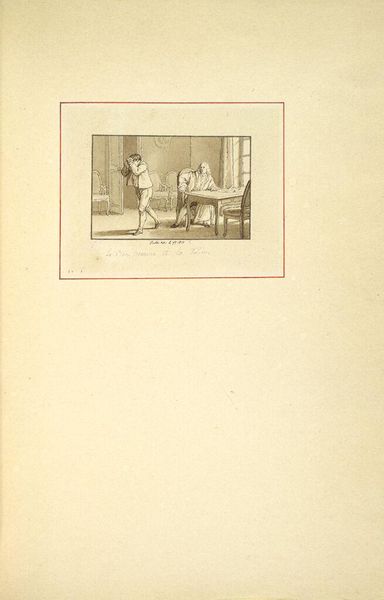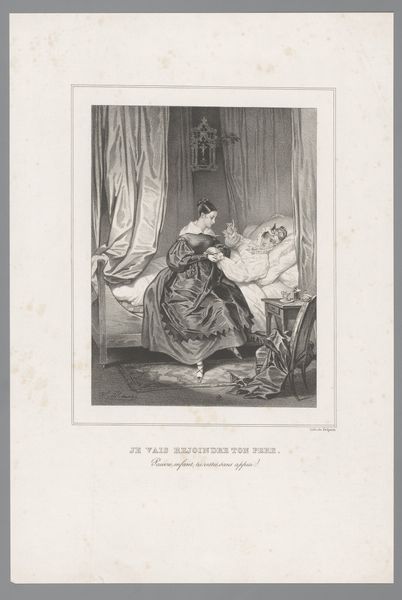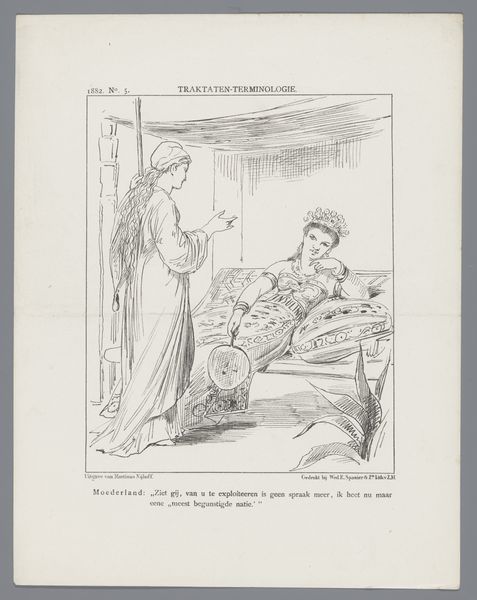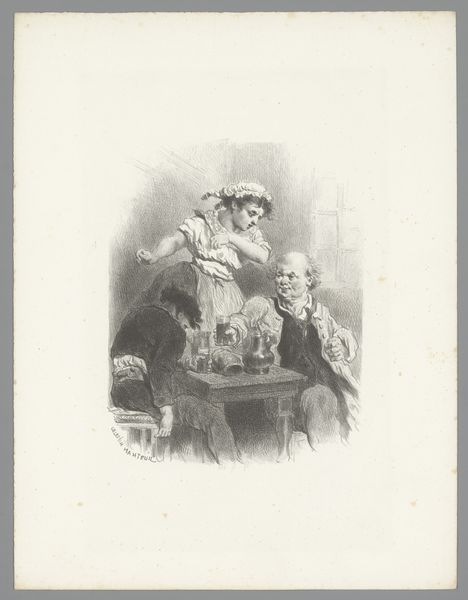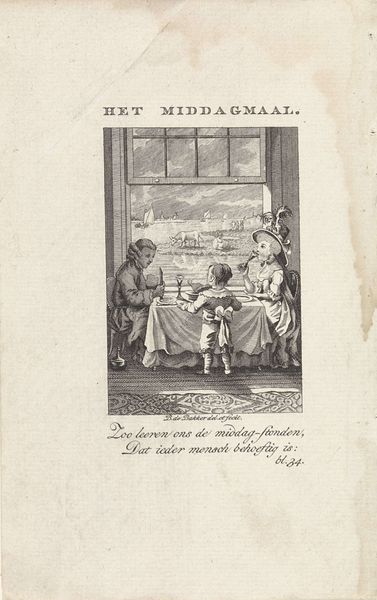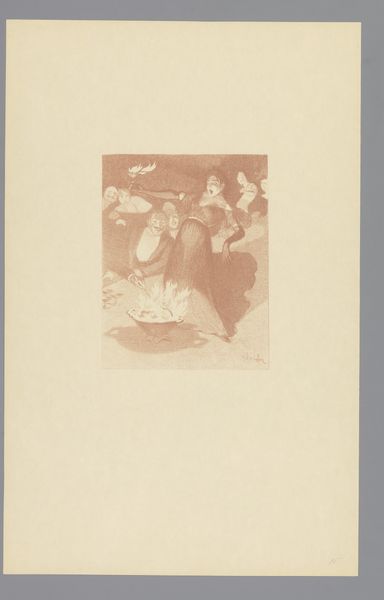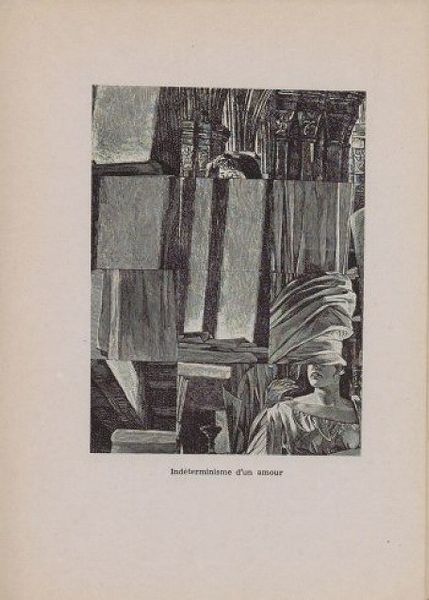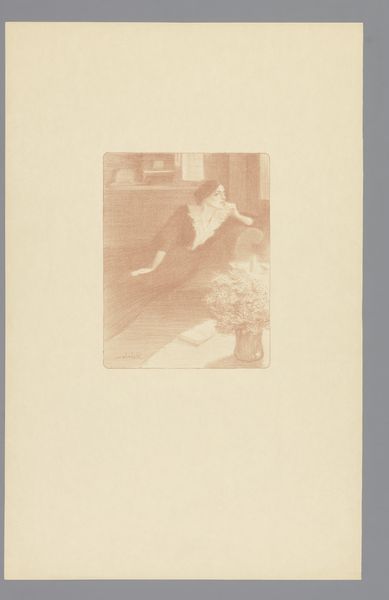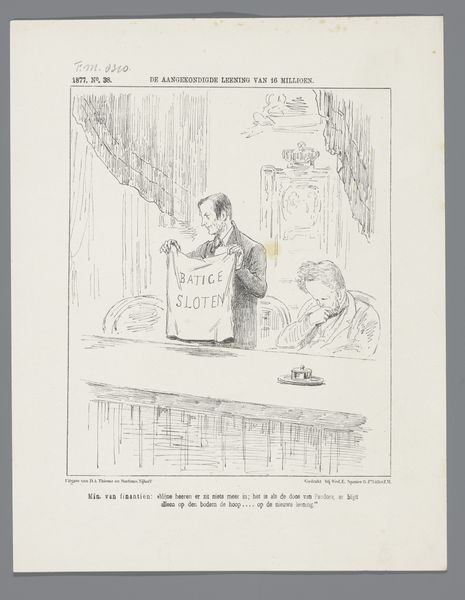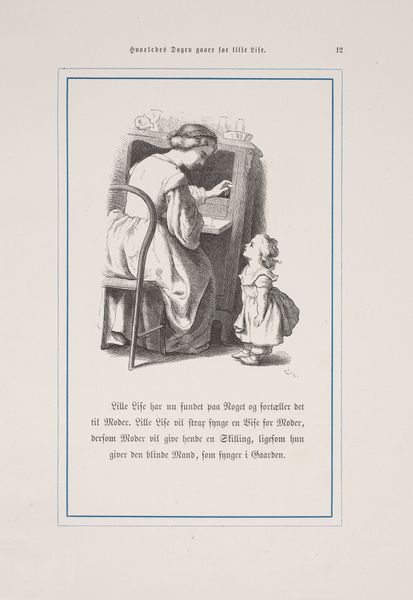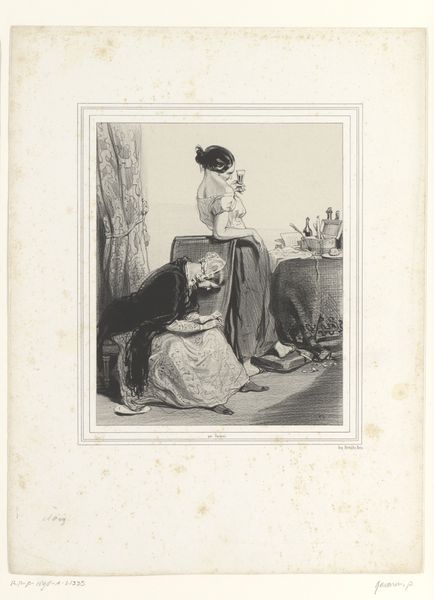
Copyright: Public Domain: Artvee
Curator: Standing before us is "Up to Date," a piece created around 1900 by J.C. Leyendecker. Editor: My initial impression is a very gentle, almost wistful feeling. The muted tones and soft brushstrokes give it a very homey, intimate quality, don't you think? Curator: It's fascinating how Leyendecker blended impressionistic plein-air techniques with the stylistic tendencies of art nouveau. But beyond the artistic movement at play, note the explicit connection of the piece to its means of production as a mass-produced image – printed on fine plate paper for framing, advertised for just 5 cents. Editor: The domestic scene itself speaks volumes. We see an older woman, presumably the grandmother, cradling a baby, while a man looks on. It’s so very clearly staged. And that man and woman—archetypes of doting parents and grandparents, reinforcing societal values through the generations. Even the mask displayed above the shelf! The painting offers a familiar, comfortable image that plays upon archetypal emotions of domestic life and lineage. Curator: Exactly, consider that the advertised image promises "copies" to consumers to "frame." To buy this painting, one doesn't necessarily need wealth or deep familiarity with the traditional fine arts. The image suggests accessibility, a conscious strategy to connect with the aspirations of a rising middle class. And of course, look at the claim made by the image's textual prompt: "The Intelligent Baby." Editor: Which speaks directly to aspirational ideas about raising a child, ensuring a bright future! It highlights themes of legacy and continuation. But look at the placement of objects around them; notice how that bookshelf subtly creates a learned environment. The artist is using that symbolism to signify values the painting embodies: comfort, knowledge, heritage. Curator: So much is encoded in how Leyendecker directs the viewer's eye to these symbolic elements of production and process of domestic labor, especially as they affect how class identity is materially represented. Editor: Precisely. By weaving familiar images and objects with artistic and social aspirations, it makes one contemplate not just the image, but our roles within the narratives that continue through time. Curator: Absolutely, thinking about the material circumstances surrounding the work opens a wider field of inquiry into society at the time, wouldn't you agree? Editor: Yes, and exploring the symbolism and cultural context provides an enduring reflection on both art and life itself.
Comments
No comments
Be the first to comment and join the conversation on the ultimate creative platform.
